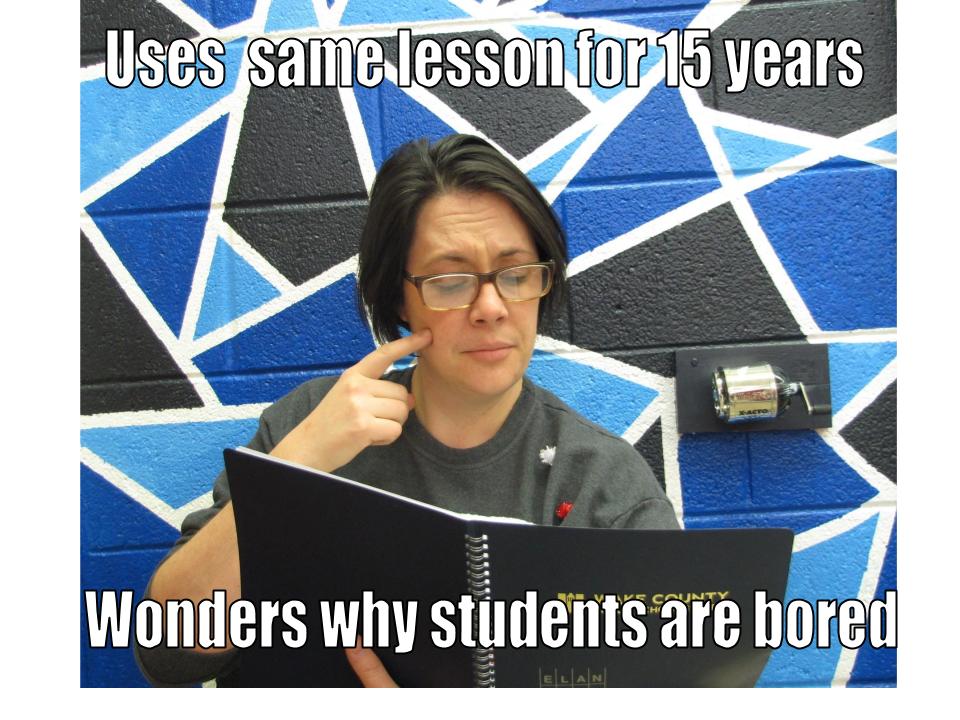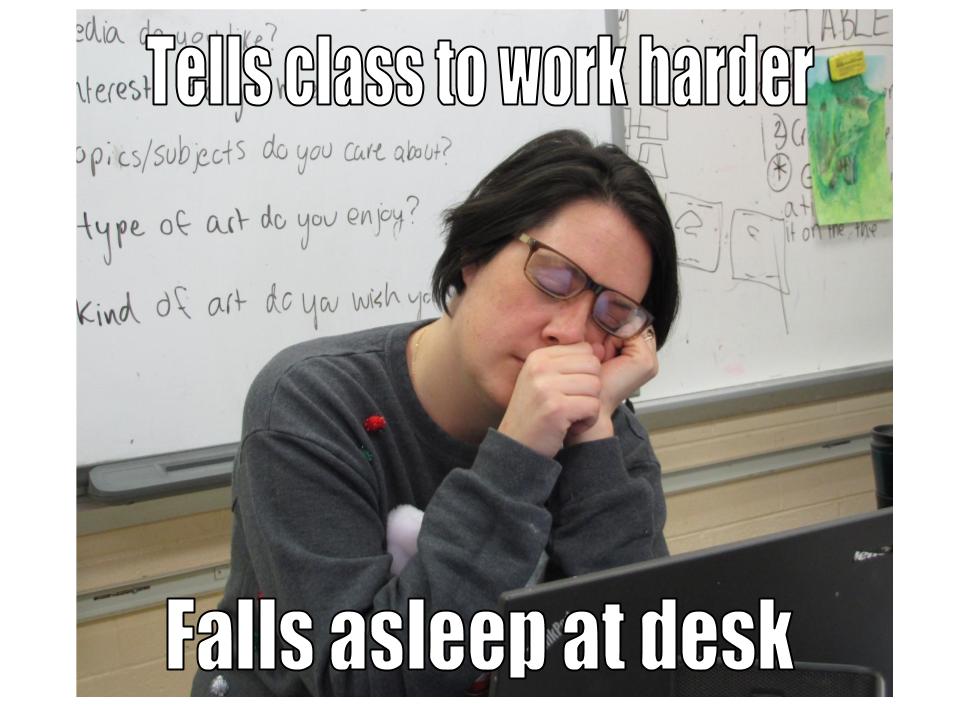It’s three days before winter break. I look around the room during my fourth-period class and I don’t like what I see. The students in my Art One class seem to be doing everything except what they should be doing, and the work they are making looks… sloppy… lazy… like a waste of materials…
These kids, I think, just don’t care.
It’s easy to blame students for bad artwork or bad behavior. We say they lack effort or talent or that they shouldn’t be in our class. We move on with our tried and true lessons, annoyed they haven’t gotten it together. Some kids just can’t learn, right?
Well, that depends on who you feel is responsible for learning.
When I have moments where I’m blaming my students for their lack of success, I have to stop and examine what I know to be true–that I’m ultimately responsible for what takes place in my classroom. When I get frustrated with what’s going on in my classroom, I take a step back and think introspectively about all the moving parts: my instruction, my lessons, my procedures, and my own actions.
How was my instruction?
If the artwork is not as successful as I envisioned, the first place I look is my instruction. If students are not understanding key concepts I know I need to re-teach them in a way that is clear and provide some time for them to apply new skills and get feedback from me. If just a few students are falling short of mastering content, I work one-on-one with them individually. If they don’t understand, I try teaching it another way.
Does my lesson need to be retooled?

If kids are apathetic and disengaged, chances are it has something to do with the content of lessons. Good teachers constantly reflect on the success of their lessons and change what isn’t working. Each class is different and has different needs. If you are spending years and years teaching the same lessons, chances are the content is not as relevant or engaging as it once was. Student behavior and work quality will reflect this.
Are my systems working?
One of the first things I look at when I have issues involving procedures are the systems I have in place. I make sure students know the procedures and have access to important information with anchor charts. Sometimes I notice a system that normally works well isn’t the best fit for a specific class and I make changes.
What am I doing?
Thinking about how what we do impacts students can be the hardest thing to do. However, when we identify things we need to change it can be easy to implement changes and make a big impact. I look at what I’m doing as I teach and think about how it might impact my students. Am I available to answer questions? Am I checking in with each student as they work?

In the situation with my Art One class, there were a few issues I noticed when I took some time to reflect. One was related to my systems. It felt like everyone was wasting supplies, but when I really looked around at was going on, only a few students were having issues. I reviewed procedures with my whole class, which solved many of the problems I was seeing.
Still, I noticed one kid pouring huge piles of paint and leaving his palette, along with whatever else he had used that day, on the counter. I was completely annoyed with him until I realized he had joined the class late in the semester and missed learning about some key procedures. He had also never been assigned a cubby to store his work. Giving him a place to store work, going over the procedures with him again, and checking in with him during cleanup time helped solve many of the issues I was seeing.
The last thing I noticed had to do with my behavior. I realized I was in the habit of taking attendance at my desk while my high school students were getting supplies. This is normally fine to do in my teaching situation, but this particular class really needed my support during that time. Changing my own behavior helped me support the behavior of my students.
It’s human nature to settle into a routine, but it’s often the opposite of what teachers need to do. Teaching isn’t about finding something you like and settling in, it’s about adapting to the needs of the students who are in your room at any given time. If your kids are making bad art, you have work to do. This requires flexibility and empathy. We have to be resilient and foster a “fix-the-problem” mindset because what happens in our classrooms is ultimately our responsibility. When we stop looking at the bigger picture for solutions to problems, we are figuratively asleep at our desks.
What do you do when you see less than excellent art or problem behavior?
How often do you reflect on your own teaching?
Magazine articles and podcasts are opinions of professional education contributors and do not necessarily represent the position of the Art of Education University (AOEU) or its academic offerings. Contributors use terms in the way they are most often talked about in the scope of their educational experiences.





